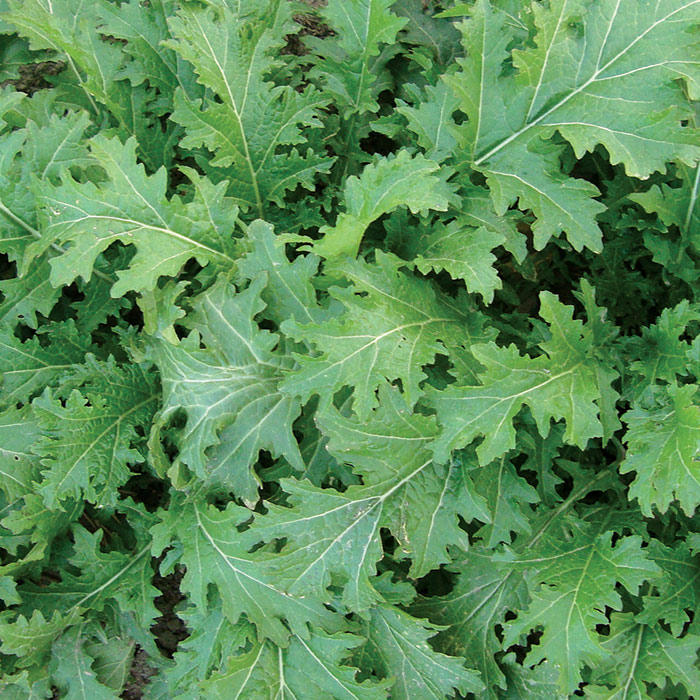More to Explore
Growing Guide: Mustard Greens

Grow and Save Mustard Green Seeds
How to Grow Mustard Greens
Mustard greens are a cool-season crop that are easy to grow. They tolerate a light frost and can be grown all winter in warmer climates. Exposure to frost makes the leaves sweeter, and warm weather makes the leaves spicier.
Time of Planting
Sow from early spring to late summer. Mustard greens can tolerate a light frost.
Spacing Requirements
When seeding, place seeds 1 inch apart in rows 6-8 inches apart. As they grow, thin to 6-18 inches apart (depending on variety).
Time to Germination
4-7 days
Special Considerations
When growing for seed, thin to increase spacing between plants and increase spacing between rows to 24-36 inches. Staking plants is also recommended when growing for seed.
Common Pests and Diseases
Aphids, whiteflies, and flea beetles are all common pests. To protect crops, use row covers.
When and How to Harvest for Food Consumption
Mustard greens can be harvested in about 6 weeks from planting. To harvest, cut the large outside leaves at the base and leave the smaller, inner leaves to continue to grow. You can continuously harvest throughout the season.
Eating
Mustard greens make a tasty, spicy addition to salads and sandwiches. Try making “Feaster Family Heirloom Mustard Greens”.
Instructional Video
Try This Recipe: Cooking with Collard Greens and Mustard Greens
Phil Kauth, former SSE director of preservation, walks you through cooking with collards and mustard greens in this video from the Resilience Garden Series.
Storing
Mustard greens can be stored in the refrigerator for about a week.
How to Save Mustard Green Seeds
Mustard greens are relatively simple to grow for seed in most regions of the United States, and harvesting and cleaning mustard seeds is an easy, straightforward process.
Life Cycle
Annual or biennial
Recommended Isolation Distance
Separate varieties by 800 feet to ½ mile.
Recommended Population Sizes
To ensure viable seeds, save seeds from at least 5 mustard plants. When maintaining a variety over many generations, save seeds from 20 to 50 plants.If you’re saving seeds for genetic preservation of a rare variety, save seeds from 80 plants.
Assessing Seed Maturity
Seed maturity occurs after market maturity, when siliques dry to a light brown color. Shattering is common.
Harvesting
The time of seed harvest will vary by location and whether the crop was overwintered or spring-planted. Seeds can be gathered by cutting branches or by harvesting whole plants. To prevent seed loss, the harvested material should be placed on drop cloths or in containers.
Cleaning and Processing
There are several methods to thresh seeds. Small harvests can be threshed by rubbing fruits between your hands or against a surface that will cause siliques to break open. For larger harvests, place whole plants in large tubs or on tarps and tread on them. Discard stalks after seeds have been dislodged, and screen and winnow the remaining material.
Storage and Viability
When stored in cool, dry conditions, seeds can remain viable for 6 years.
Read more about storing seeds.
Instructional Video
At-Home Seed Processing
Join former SSE employee Koby Jeschkeit-Hagen to learn some easy tricks for saving seed from the garden produce you grow and love.